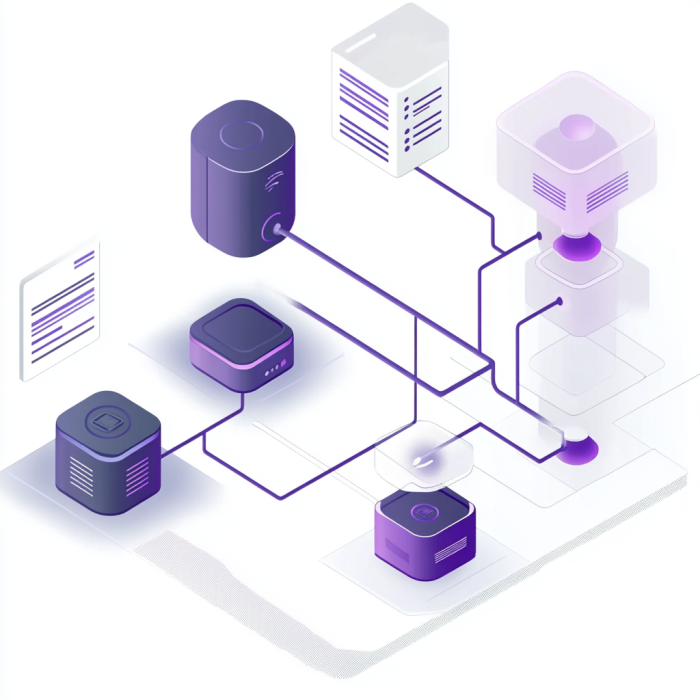

In the rapidly evolving world of artificial intelligence, OpenAI continues to push boundaries with its innovative solutions. The latest offering from OpenAI, the Realtime API, marks a significant milestone in AI voice application development. Designed to simplify and enhance the creation of sophisticated voice apps, this tool integrates speech recognition, text generation, and speech synthesis into a single API call, reducing complexity and latency. This post explores the features, benefits, and potential of the Realtime API, particularly for AI developers, software engineers, and tech entrepreneurs.
One of the standout features of the Realtime API is its ability to condense multiple complex processes into a singular API call. By merging speech recognition, text generation, and speech synthesis, developers can streamline their workflows, focusing on creative design rather than technical integration. This consolidation not only saves time but also reduces the technical challenges associated with managing multiple endpoints, making it an attractive solution for businesses looking to innovate quickly.
A key technical advancement in the Realtime API is the establishment of a persistent WebSocket connection with OpenAI’s GPT-4o model. This connection ensures continuous data exchange, enabling real-time interactions that are crucial for applications like virtual assistants and interactive voice systems. By maintaining an open line of communication, applications can deliver responses faster, creating a seamless and natural conversational flow.
The Realtime API’s support for function calling further enhances its versatility. Developers can now integrate custom actions directly into their voice applications, allowing them to retrieve specific information, handle transactions, or make reservations. This feature opens up possibilities for creating personalized, context-aware user experiences that can adapt to individual needs and preferences.
By consolidating multiple processes into one API call, developers experience a significant boost in efficiency. This means faster development times, quicker iterations, and ultimately, faster go-to-market timelines. The efficiency gained from using the Realtime API allows developers to allocate resources more effectively and focus on refining the user experience.
The reduction in latency achieved through the Realtime API’s integrated approach is a game-changer for real-time voice applications. With rapid response times and a natural conversational flow, users enjoy a more engaging and interactive experience. This improvement enhances user satisfaction and can lead to higher retention rates for voice-based applications.
The Realtime API was launched in public beta on October 1, and is available to paid developers. The pricing model is based on the number of text and audio tokens processed, offering flexibility and cost-effectiveness. Developers pay only for what they use, making it accessible for both small-scale projects and large deployments. For those eager to explore the capabilities of the Realtime API, OpenAI provides access through its Playground, extensive documentation, and a reference client.
OpenAI recognises the importance of safety and privacy in AI applications. To address potential risks, the Realtime API implements multiple layers of protection, including automated monitoring and strict usage policies. These measures ensure that applications built using the API adhere to ethical standards, especially in sensitive domains such as customer service, healthcare, and finance.
To enhance the API’s capabilities, OpenAI has partnered with industry leaders such as LiveKit, Agora, and Twilio. These collaborations provide critical support for audio components, ensuring high-quality voice applications. Developers benefit from a robust ecosystem that expands the API’s functionality and reliability, making it a formidable tool for enterprise applications.
OpenAI has ambitious plans for the Realtime API, including the integration of additional modalities like vision and video. These expansions will unlock new use cases, making the API even more versatile for multi-modal AI application development. Additionally, OpenAI plans to offer official SDK support for popular programming languages such as Python and Node.js, further simplifying the integration process for developers.
OpenAI’s Realtime API represents a significant advancement in AI voice application development. By streamlining processes, enhancing real-time interactions, and prioritizing safety, this tool empowers developers to create sophisticated voice applications with ease. As OpenAI continues to innovate and expand the API’s capabilities, developers have a unique opportunity to leverage these advancements for competitive advantage and explore new business opportunities. To experience the potential of the Realtime API firsthand, sign up for free access today and revolutionize your approach to AI voice development.
This website uses cookies to improve your experience. Choose what you're happy with.
Required for the site to function and can't be switched off.
Help us improve the website. Turn on if you agree.
Used for ads and personalisation. Turn on if you agree.
This website uses cookies to improve your experience. Choose what you're happy with.
Required for the site to function and can't be switched off.
Help us improve the website. Turn on if you agree.
Used for ads and personalisation. Turn on if you agree.